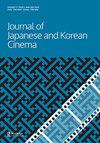冲绳之旅的回忆:作为散文的风景电影,与高岭根的《冲绳梦展》(1974)
引用次数: 0
摘要
摘要本研究将自己置于散文电影、景观电影(fūkei eiga)和冲绳之间的交叉点。它旨在了解这种交集如何有助于重新思考20世纪60年代末和70年代初日本(和冲绳)的独立(纪录片)电影制作。我重点介绍了出生在冲绳、居住在京都的电影制作人高胺根,尤其是他的第一部纪实电影《冲绳梦秀》(1974)。虽然“景观电影”被用来框定和描述一系列的话语表达,以及围绕“fūkei”(景观)的伴随的电影制作实践,但我从散文式电影的讨论中借鉴了一些见解来解读景观电影。我认为,《冲绳梦秀》利用间隙策略,配置了一个时间和情感的组合,以想象一个既失落又尚未到来的冲绳景观。本文章由计算机程序翻译,如有差异,请以英文原文为准。
Reminiscences of a journey to Okinawa: landscape film as essay, and Takamine Gō’s Okinawan Dream Show (1974)
ABSTRACT This study places itself at the intersection between essay film, landscape film (fūkei eiga), and Okinawa. It aims to understand how such an intersection contributes to rethinking independent (documentary) filmmaking in Japan (and Okinawa) during the late 1960s and early 1970s. I highlight Okinawa-born, Kyoto-based filmmaker Takamine Gō, particularly his first nonfiction feature, Okinawan Dream Show (1974). Whereas ‘landscape film’ is used to frame and describe a spectrum of discursive articulations and the concomitant filmmaking practices centreing around ‘fūkei’ (landscape), I unpack landscape film with insights borrowed from the discussions of essayistic cinema. I shall argue that Okinawan Dream Show leverages interstitial strategies to configure a temporal and affective assemblage to envision an Okinawan landscape that is both lost and yet to come.
求助全文
通过发布文献求助,成功后即可免费获取论文全文。
去求助
来源期刊

Journal of Japanese and Korean Cinema
Arts and Humanities-Visual Arts and Performing Arts
CiteScore
0.60
自引率
0.00%
发文量
16
期刊介绍:
Journal of Japanese and Korean Cinema is a fully refereed forum for the dissemination of scholarly work devoted to the cinemas of Japan and Korea and the interactions and relations between them. The increasingly transnational status of Japanese and Korean cinema underlines the need to deepen our understanding of this ever more globalized film-making region. Journal of Japanese and Korean Cinema is a peer-reviewed journal. The peer review process is double blind. Detailed Instructions for Authors can be found here.
 求助内容:
求助内容: 应助结果提醒方式:
应助结果提醒方式:


